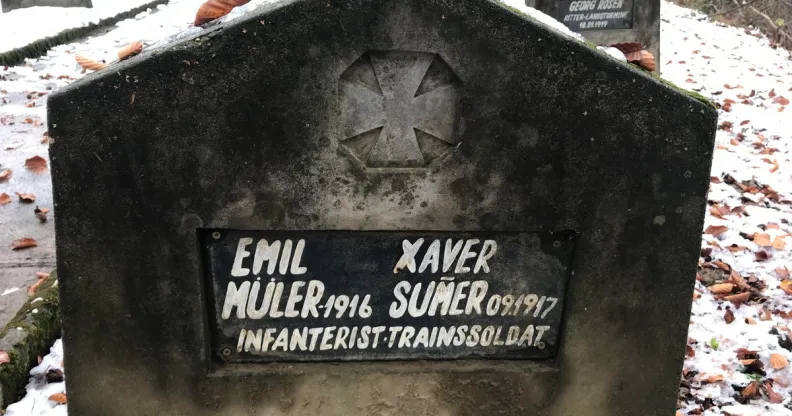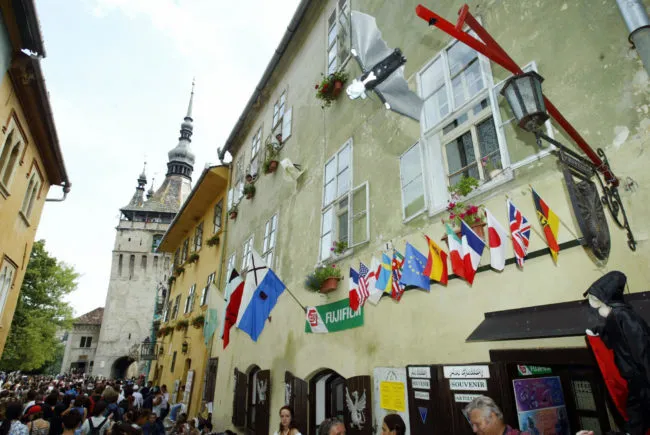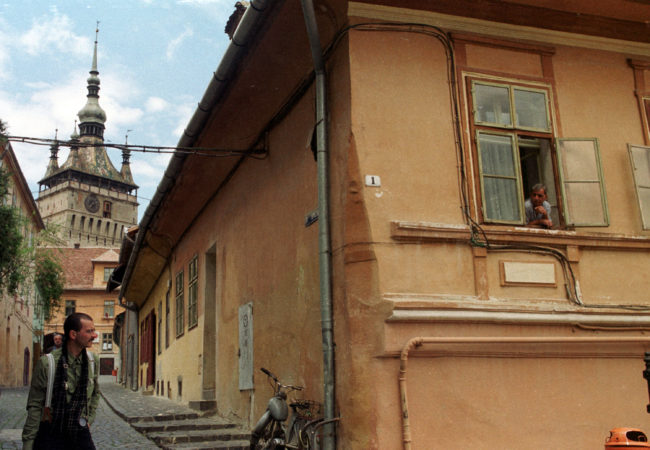Emil and Xaver: Gay love story of WWI soldiers buried together goes viral

Writer Guillem Clua spotted the tombstone in a cemetery in Romania. (Guillem Clua)
Two soldiers who died during War World I have gone viral on Twitter after a writer wrote a gay love story imagining the reason they are buried together.
The names of Emil Mueller and Xaver Sumer are painted next to one another on a single tombstone in the cemetery of Sighisoara, a city of just over 26,000 people located in Romania’s historic region of Transylvania.
The town is already a tourist hotspot for being the birthplace of the 15th century Romanian military commander Vlad Dracula ‘The Impaler’ Tepes, the real-life basis of the fictional character Dracula the vampire.
But the viral Twitter thread by a Madrid-based author may soon turn the medieval town into a romantic destination for gay couples.
“If some of you visit Sighisoara, leave some flowers in memory of the love stories that will never be told.”
— Guillem Clua
Guillem Clua, who describes himself as a dramaturgist, screenwriter and director, spotted Emil and Xaver’s grave while visiting the country in November and took a few pictures.
Upon his return to Spain, he began writing a fictional story about Emil and Xaver, imagining the reason for their shared tombstone was the result of a forbidden gay love story and a complicated friendship.
Gay love story of Emil Mueller and Xaver Sumer goes viral
The first post in the viral thread, written in Spanish, is dated November 22. The story continues over nearly 200 posts, including GIFs, videos and pictures, contributing to the realistic feel and pace of the narration.
Just like a gripping TV show, Clua’s story stops on cliffhangers before starting again the following day—Clua finally reached the tale’s conclusion on December 3.
Within the space of 12 days, thousands of people engaged with Clua’s story. The first tweet of the saga has since been retweeted 23,000 times and it’s been liked by 44,000 people. English and Portuguese translations of the thread have since become available as the story’s popularity branched outside of the Spanish-language sphere.

The gay love story may bring a new kind of tourism for the Romanian city of Sighisoara. (Daniel Mihailescu/AFP/Getty)
“I could have never imagined that it would have such resonance,” Clua tells PinkNews. “I think people have a great need to believe in love and and to fill with stories the LGBT romances that have been taken from us over the centuries.”
After publishing the story, Clua wrote a message on his personal website to clarify that the story, realistic as it felt, was simply a work of fiction.
Clua confirmed to PinkNews that only the photos of the tombstones with the two names are real, all other elements are made up.
The author did not specify the origin of the pictures accompanying the story, although some of them appear on Google Images search about Sighisoara and its cemetery.
Clua explained in his statement that even if the events described are fictional, the emotions people felt reading the story—and he writing it—were real. “For me, nothing is more real than that feeling,” he wrote.
His statement continued: “Emil and Xaver have existed, yes. But only in the story that we have all shared did they love each other with the intensity that we would all like to experience,
“With their story I only wanted to shed a light on all the LGBT+ love stories that can never be told and that are condemned to oblivion.”

Located in the heart of Transylvania, Sighisoara was the birthplace of Vlad Dracula “The Impaler” Tepes. (David Greedy/Getty)
Clua said he understood if some people felt cheated, but he launched a call to action to turn the story into something larger than just a Twitter thread.
He wrote: “My intention has never been to take advantage of people’s credulity. In fact, it would be nice if we all made the story of Emil and Xaver come true, turning this grave into a symbol for those who were not allowed to love each other and who deserved a better ending, together and in peace.
“And if some of you visit Sighisoara, leave some flowers in memory of the love stories that will never be told.”
The story of Emil and Xaver may also live on in other forms, as Clua confirmed to PinkNews he is working on “future adaptations” of the gay love story.

